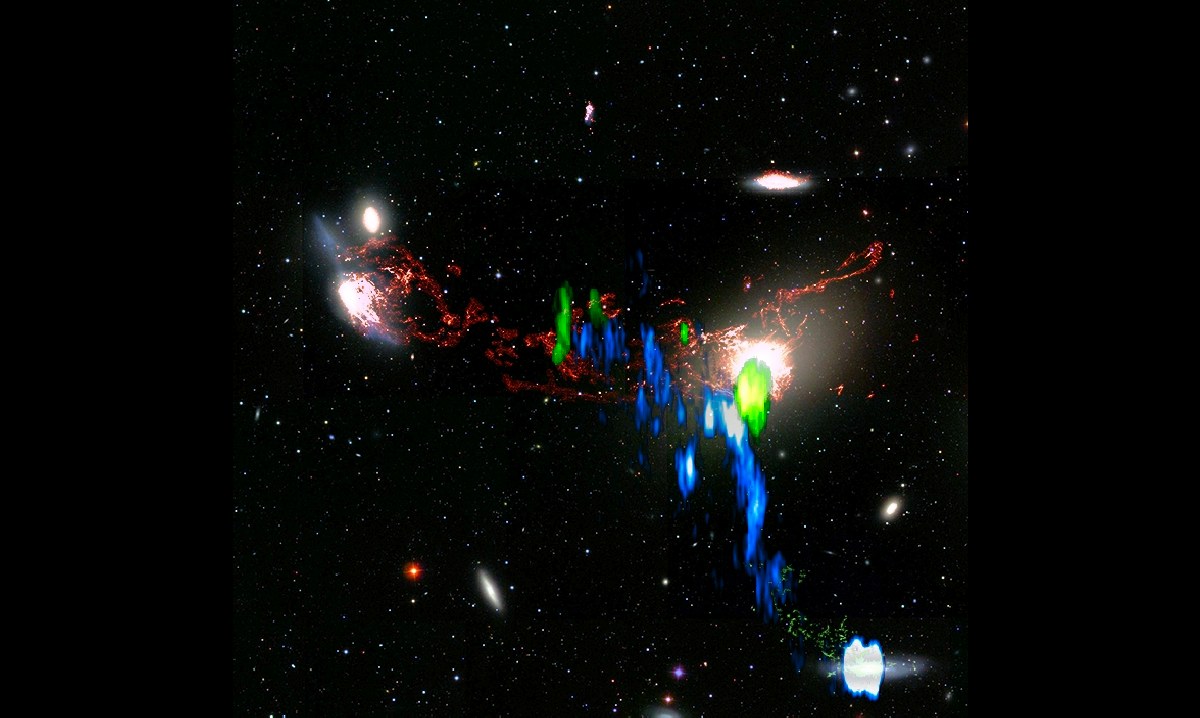Daily Image
20-01-2009Three is a crowd
| Submitter: | Tom Oosterloo |
| Description: | Galaxies change and evolve over cosmic times. How they evolve, and how quickly, very much depends on where they live. Galaxies evolve not only because their own metabolism, such as star formation eating away the gas of a galaxy, but also because of interactions with other, neighbouring galaxies, often causing significant structural damage. In the denser regions of the universe, encounters between galaxies are frequent and in such places the evolution of galaxies is often fast and furious. In the early universe, when the galaxy density was much higher, interactions occurred very frequently, but if you look in the right place, you can still find ongoing interactions in the nearby universe. The image (a combination of WSRT data with the beautiful optical image made by Kenney et al.) shows a small portion of the nearby Virgo cluster of galaxies, the closest dense region of the universe. This image shows some nice examples of how complicated the interactions between galaxies can be, and that even the remnants of past interactions can interact again. The blue tail is cold gas being pushed out from NGC 4388 (galaxy bottom right) by the hot gas that fills Virgo the cluster (see the ADJI of 18-05-2006). Interestingly, the green clouds in the bottom right is gas of the same tail that is being ionised by the very energetic radiation from an active super massive black hole in the centre of NGC 4388, in a very similar way as the "green frog" in Hanny's Voorwerp. The red tail is due to NGC 4438 (the galaxy on the left) moving at high speed through the halo of the large elliptical galaxy M86 on the right, leaving a trail of ionised gas. The gravitational forces of this interaction have clearly distorted NGC 4438. To make things even more complex, new WSRT observations show that some small clouds of HI (the green blobs near the centre) are present in the "red" tail, indicating that M86 and the "red" tail are crashing into the "blue" tail of NGC 4388 at very high speeds, compressing and brightening it. |
| Copyright: | Astron & Jeffrey Kenney |
| Tweet |  |
